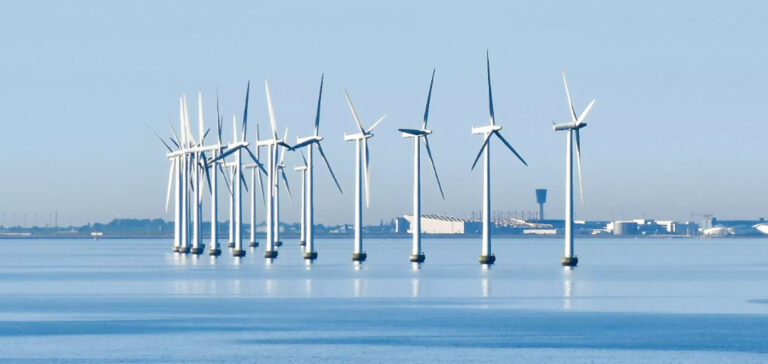The Gulf of Maine is opening up to offshore wind energy, offering promising economic and environmental prospects for the region.
An opportunity for clean energy
The Bureau of Ocean Energy Management (BOEM) recently announced a major step forward in the deployment of offshorewind energy in the United States. It has identified a provisional Wind Energy Development Area (WEA) in the Gulf of Maine. This is part of the Biden-Harris administration’s ambitious goals. They aim to deploy 30 gigawatts of offshore wind capacity by 2030. In addition, these targets call for 15 gigawatts of floating offshore wind turbines by 2035.
Economic and environmental opportunities
The Gulf of Maine has become a focus of attention for its offshore wind energy potential. President Biden’s “Invest in America” agenda aims to develop the American economy. It encourages investment in clean energy and the creation of well-paid jobs. The development of offshore wind energy in the Gulf of Maine offers significant opportunities in this respect.
Planning and collaboration
As part of this project, BOEM maintains a solid and transparent planning process. Collaboration with tribal governments, federal agencies, states and the fishing community is a priority to minimize potential impacts.
Offshore zone selection
BOEM worked in collaboration with the National Oceanic and Atmospheric Administration’s National Centers for Coastal Ocean Science to develop an ocean planning model. This model identifies and minimizes potential conflicts with coastal and marine resources, as well as with ocean users. In addition, BOEM took into account feedback from tribes, fishermen and the public to determine the most appropriate offshore locations.
Public consultation and comments
For the 30-day public comment period, BOEM will organize public meetings. We can then discuss the data and information that led to the creation of the provisional WEA. All stakeholders are invited to participate in this process by submitting their comments on regulations.gov (docket number BOEM-2023-54) by November 20, 2023.
The announcement of the provisional WEA in the Gulf of Maine represents a significant step towards achieving the goals of offshore wind energy development in the United States. Similarly, a focus on collaboration, sound planning and addressing stakeholder concerns is essential to ensure the sustainable development of this crucial resource.
The Gulf of Maine region is emerging as a promising hub for offshore wind energy, paving the way for economic growth, job creation and reduced environmental impact. The development of these areas will help shape a cleaner, more resilient energy future for the United States.
Final Analysis
The Gulf of Maine offshore wind energy initiative is a concrete example of the Biden-Harris administration’s commitment to sustainable economic growth and the fight against climate change. By investing in renewable energies, this approach reconciles economic prosperity with environmental protection. This is an important step towards a cleaner, more resilient and economically prosperous energy future for the United States.






















